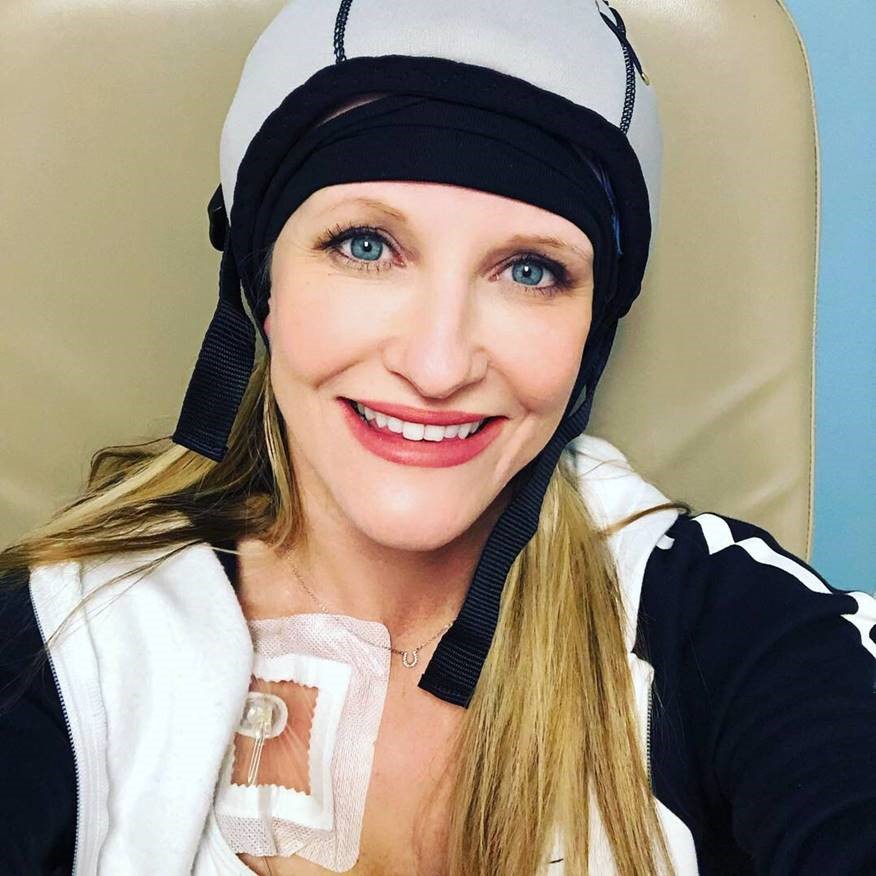
Hair-Saving Technology Helps Wendy Feel Like a Person, Not a Patient
Cancer, Improving Quality of Life
Wendy Siminski
Hair loss can be devastating for patients. It is a constant, visual reminder of their disease and its impact.
Wendy Siminski, who is currently undergoing chemotherapy to treat breast cancer, is determined to keep her hair from cancer’s clutches. Thanks to an innovative scalp cooling system, she’s maintained close to eighty percent of her natural hair. And thanks to medtech diagnostics, imaging equipment, surgical solutions and treatment delivery vehicles, she’s fought cancer for the last five months.
Of course, Wendy is no stranger to medical technology; Wendy is the lead planner on The Medtech Conference – the nation’s annual flagship conference for the medical technology industry.
Wendy’s Diagnosis
October 31, 2018 started like any other day. Wendy was scheduled for a routine mammogram, and while she wasn’t looking forward to the small discomfort, she wasn’t expecting anything out of the ordinary.
Wendy received a 3D mammogram, which uses the same amount of radiation as a 2D mammogram, but offers a more detailed snapshot of the full breast. While a 2D mammogram takes a single picture, a 3D mammogram takes multiple pictures, providing greater depth and distinction.
Analyzing her mammogram results, Wendy’s health care team noticed calcifications in one breast that warranted further investigation. Often, calcifications aren’t a result of cancer – they occur naturally in body tissue. But sometimes, if calcifications are clustered together or are forming certain patterns, they can point to early-stage breast cancer.
Wendy’s health care team set to work on specific diagnostics. Wendy received five mammograms, two ultrasounds, two magnetic resonance imagings (MRI’s), and three biopsies. These tests helped reveal two different types of breast cancer in both breasts.
“Medical devices diagnosed me,” Wendy said. “The cancer in my second breast would not have even been diagnosed without the MRI. MRIs can detect cancer that a mammogram might miss in women like me who have dense breast tissue. I’d encourage all young women to educate themselves on dense breast tissue and make sure they’re receiving the screening and diagnostic tests they need.”
Wendy’s Treatment
Two types of cancer in both breasts would require aggressive treatment. Wendy underwent a bilateral mastectomy, a surgery to remove her breasts.
While the surgery was successful, it put extreme stress on the remaining skin on Wendy’s chest. Within just twenty-four hours, Wendy’s skin showed signs that it was beginning to die. Wendy’s health care team determined she needed time in a hyperbaric chamber, a room or unit in which the air pressure is much higher than normal air pressure. When a patient rests in a hyperbaric chamber, their lungs can gather more oxygen than possible in normal air pressure conditions, helping to restore tissue function and promote healing.
“I spent seventeen and a half hours over four days in a hyperbaric chamber to literally save my skin,” said Wendy.
The treatment was successful, and her skin began to recover.
Once Wendy had recovered from her surgical treatments, it was time for chemotherapy. Wendy is currently undergoing chemotherapy infusions, and she opted for an implanted port delivery model, since her treatment requires infusions for a full year. A port is a small device implanted under the skin that allows doctors to easily access your bloodstream without inserting an IV each treatment.
“The port will save me from multiple needle pricks as my veins become harder to access over time,” said Wendy.
Feeling Like a Person, Not a Patient
Once of the most commonly-associated side effects of chemotherapy is hair loss. Chemotherapy targets the body’s rapidly dividing cells, including the the cells that help hair grow.
“Most patients on my regimen would have lost all their hair by now,” said Wendy.
However, thanks to a unique piece of medical technology, Wendy has only lost fifteen to twenty percent of her locks.
Wendy uses an FDA-approved scalp cooling system that uses extreme cold to reduce blood flow to a patient’s hair follicles, reducing the toxicity of drugs to the scalp.
“I wear a special cap for approximately 5 hours before, during and after chemo that causes vasoconstriction in my scalp,” said Wendy. “I’ve had really good results after three high dose chemo rounds.”
For Wendy, the benefits go well beyond mere aesthetics.
“A lot of people don’t know I’m going through chemo for breast cancer, because I haven’t lost my hair,” said Wendy. “Keeping my hair makes me feel more like a person, and less like a patient. Confidence builds up your inner strength to persevere.”
Wendy’s hair also stands as a symbol of confidence for her children.
“To my kids, I look healthy, therefore I can’t be sick,” said Wendy. “They’re not worried or scared about what will happen to me. My two little girls can see Mom as the bionic woman. That has made all the difference in my treatment. I’m eternally grateful for that.” For more information on the impact of medical technology on cancer treatment.